My beloved Alaskan klee kai, Fenrir, recently just turned 7 years old! I’ve been wanting to work on this post for quite awhile now, ever since I originally posted my Papillon Breed Profile. However, I kept putting this post off, literally for years. I figured it wouldn’t hurt to spend more time immersed in all that is Alaskan klee kai before writing a breed profile on them. Alaskan klee kai are amazing dogs, but defiantly not for everyone. I figured that after 6+ years of owning one, I’m finally ready to write this post!
Post Contents:
Breed History:
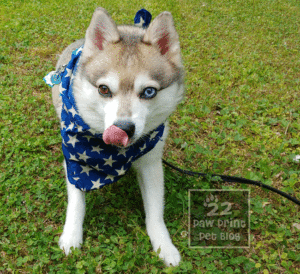 The Alaskan klee kai is a relatively new dog breed. The breed originated, as its name suggests, in Alaska. In the 1970’s, a breeder by the name of Linda Spurlin dreamed of, basically, downsizing huskies.
The Alaskan klee kai is a relatively new dog breed. The breed originated, as its name suggests, in Alaska. In the 1970’s, a breeder by the name of Linda Spurlin dreamed of, basically, downsizing huskies.
Spurlin bred Alaskan and Siberian huskies with smaller schipperkes and American Eskimo dogs to create the first Alaskan klee kai. This resulted in dogs that did well in the harsh Alaskan climate, and looked very similar to Siberian huskies, but that were much smaller than their larger husky cousins. Fittingly enough, the name “klee kai” comes from the language of indigenous Athabaskan and means “little dog”. Alaskan klee kai are, quite literally, Alaskan little dogs!
Fun fact: “Alaskan klee kai” is the plural of Alaskan klee kai! You’ll sometimes see people add an “s” to the end to make the breed name plural, but this is incorrect. AKK is a common abbreviation for the breed name.
Being such a new breed, Alaskan klee kai are not yet recognized by the American Kennel Club. In 2020, however, it was accepted into the American Kennel Club’s Foundation Stock Service. In 1997 the breed was recognized by the United Kennel Club.
Appearance:
Alaskan klee kai come in 3 distinct sizes, and three recognized colors. The three sizes recognized are toy, miniature, and standard. AKK sizes are determined by the dog’s height, measured from the shoulders, and not weight. Toy size Alaskan klee kai are 13 inches tall and under. Miniature AKK are 13 to 15 inches tall. Standards are over 15 inches, but under 17.5 inches. Any dog over 17.5 inches tall to the withers is considered to be oversized.
My Alaskan klee kai, Fenrir, is about 14.5 inches tall so is considered to be a miniature Alaskan klee kai. Fenrir, at his last vet checkup, weighed in at 18 lbs. This breed is somewhat known for being lanky and lean, especially when they’re young. Weight does not factor into the breed standard, and weights can vary quite a bit depending on how tall your AKK grows to be.
Alaskan klee kai have thick double coats similar to that of a husky. The recognized colors of AKK include black and white, red and white, and gray and white. All white dogs pop up in litters every now and than and while beautiful, any solid colored coats are a disqualification when it comes to the breed standard. Breed standard Alaskan klee kai have a distinctive facial mask, and tails that curl up over their backs.
Per the breed standard, Alaskan klee kai can have eyes of any color. Heterochromia and party eyes are somewhat common in the breed. Budging eyes, or eyes that are set too deep, are both considered faults.
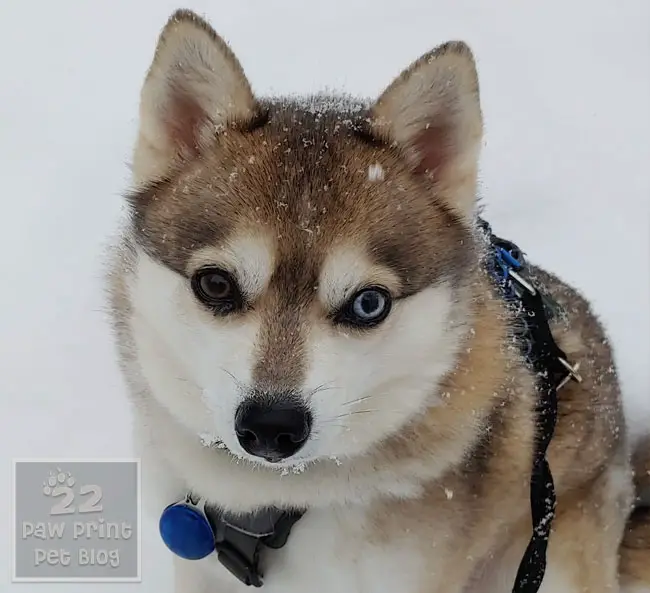
Grooming:
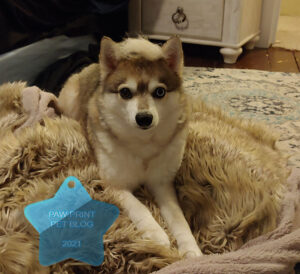 With their thick, double, husky like coats, AKK should ideally be brushed often. As far as grooming goes, they are generally pretty low maintenance but, be warned, this breed does shed a lot. I once heard a fellow AKK owner joke that Alaskan klee kai have two shedding seasons. One is from January until June and the other is July until December. While AKK will blow their coats, or shed out their fluffy undercoats, twice a year, don’t expect the rest of the year to be fur free. This is not the breed for you if living, wearing, eating dog hair bothers you.
With their thick, double, husky like coats, AKK should ideally be brushed often. As far as grooming goes, they are generally pretty low maintenance but, be warned, this breed does shed a lot. I once heard a fellow AKK owner joke that Alaskan klee kai have two shedding seasons. One is from January until June and the other is July until December. While AKK will blow their coats, or shed out their fluffy undercoats, twice a year, don’t expect the rest of the year to be fur free. This is not the breed for you if living, wearing, eating dog hair bothers you.
In general, though, I find cleaning Fen’s fur off my rugs to be more work than cleaning Fen himself. Once a week I dremel Fen’s nails, and about every other week or so I bathe him. Baths this frequently aren’t required, but I personally like to keep my dogs on the cleaner side. If you also decide to bathe often, make sure to use a high quality dog shampoo so you’re not stripping out your dog’s natural oils.
General maintenance stuff like brushing teeth, cleaning ears, etc., is important. I also trim the fur on the bottoms of Fenrir’s paws around twice a month. This keeps his paws cleaner, and helps prevent him from slipping on our wood floors.
Health:
Especially since this is a newer breed, breeders and owners are encouraged to monitor their dogs closely for any health issues. So far, some known issues include thyroid issues, FVII deficiency, and nutritional issues. Factor VII deficiency is a genetic blood clotting disorder that can cause dogs to bleed more than is normal after injury or surgery, and rarely spontaneously. Thankfully, responsible AKK breeders can complete a DNA test to establish whether their breeding dogs carry this genetic disorder. Dogs carrying FVII deficiency should not be bred.
Alaskan klee kai are pretty notorious for being picky eaters. While not necessarily a health issue per say, feeding these dogs an inadequate or incomplete diet can lead to health issues. This has been something I’ve personally struggled with with my own dog. For most of his life, he’s been underweight thanks to how selective he can be about eating. If your dog is similar, I suggest working with a vet nutritionist to help find a healthy diet that your dog will actually eat.
Temperament:
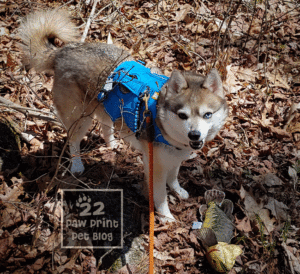 Despite looking like little huskies, it’s important to recognize that Alaskan klee kai do not necessarily have the same personalities as huskies. These are high maintenance little dogs!
Despite looking like little huskies, it’s important to recognize that Alaskan klee kai do not necessarily have the same personalities as huskies. These are high maintenance little dogs!
Alaskan klee kai are very commonly 1 person dogs. They will be obsessed with their special person, and often want very little to do with anyone else. It’s not uncommon for this breed to be shy, or weary of strangers. Alaskan klee kai are the introverts of the dog world. Now that’s something I can relate too!
Many of the AKK I’ve met have, in general, been prone to developing anxieties. Because they bond so strongly with their people, separation anxiety can be common in this breed. I’ve never had a dog that feeds off my own moods more than my AKK. Usually this isn’t a bad thing, but during stressful times it can be. Training can sometimes be a challenge, not because AKK are not intelligent, but because they are oftentimes unmotivated to work for treats. With my own AKK, I had to learn how to use toys and play as a training reward, because Fenrir has next to no food motivation.
Klee Cats!
AKK are sometimes referred to as “klee cats” due to their often times cat-like personalities. They can be stubborn, demanding, and want attention on their terms. Although they are not really known for being barkers, this is a talkative breed. Believe me, they will let you know what’s on their mind in no uncertain terms, usually in the form of all kinds of crazy sounds that you’ve never heard a dog make before!
These dogs are extremally loving, loyal to a fault to their family members, and super playful. They’re a lot of fun! But they are also very high maintenance little dogs that will do best in homes well prepared to deal with their quarks.
Small but Mighty!
I hate how often little dogs get underestimated. The Alaskan klee kai is not a dog to underestimate. In the years I’ve had Fenrir, I’ve met AKK that excel at all kinds of dog sports. Everything from weight pull to agility.
Alaskan klee kai are high energy little dogs. In my opinion, this is not a small dog breed for couch potatoes. They need owners who will be willing to commit to providing them with ample mental and physical exercise. Generally, this isn’t a breed that can be trusted off leash. Care should be taken to establish a safe, escape proof space to exercise when outdoors.
Ideal Owners:
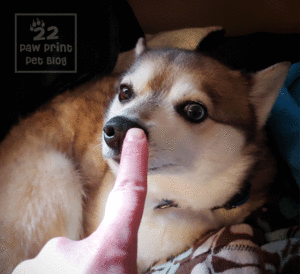 I absolutely adore my AKK, but he has, by far, been the most challenging dog I’ve ever worked with. For many years my little pack lived in the city. While, like I mentioned before, there are perks to raising dogs in the city, in my opinion Alaskan klee kai are not the best city dogs. They prefer quieter environments, where they can spend most of their time with their families. AKK are interesting, unique looking dogs, so everyone and then some will want to pet them. This can be stressful for these shy dogs, who usually prefer not to interact with people they don’t know really well.
I absolutely adore my AKK, but he has, by far, been the most challenging dog I’ve ever worked with. For many years my little pack lived in the city. While, like I mentioned before, there are perks to raising dogs in the city, in my opinion Alaskan klee kai are not the best city dogs. They prefer quieter environments, where they can spend most of their time with their families. AKK are interesting, unique looking dogs, so everyone and then some will want to pet them. This can be stressful for these shy dogs, who usually prefer not to interact with people they don’t know really well.
Fen, despite his size, makes an amazing hiking companion. He also just loves spending time outdoors, whether we’re laying in the grass relaxing or playing fetch on his long line.
Alaskan klee kai, in my opinion, do best with very committed owners who have the time to provide ample and on-going training, as well as both mental and physical exercise. In most situations, I don’t think AKK make good pets for first time dog owners, or for anyone who doesn’t take the time to really get to know what they are getting themselves into with this unique breed.
But for the right people, Alaskan klee kai can make amazing pets. They love their people on a level that borders on obsessive, so with your AKK around you’ll never be alone. They are playful and loving, and make amazing little adventure companions.
Comment below! Have you ever met an Alaskan klee kai? Or maybe you have one of your own? What has your experience with this breed been like?
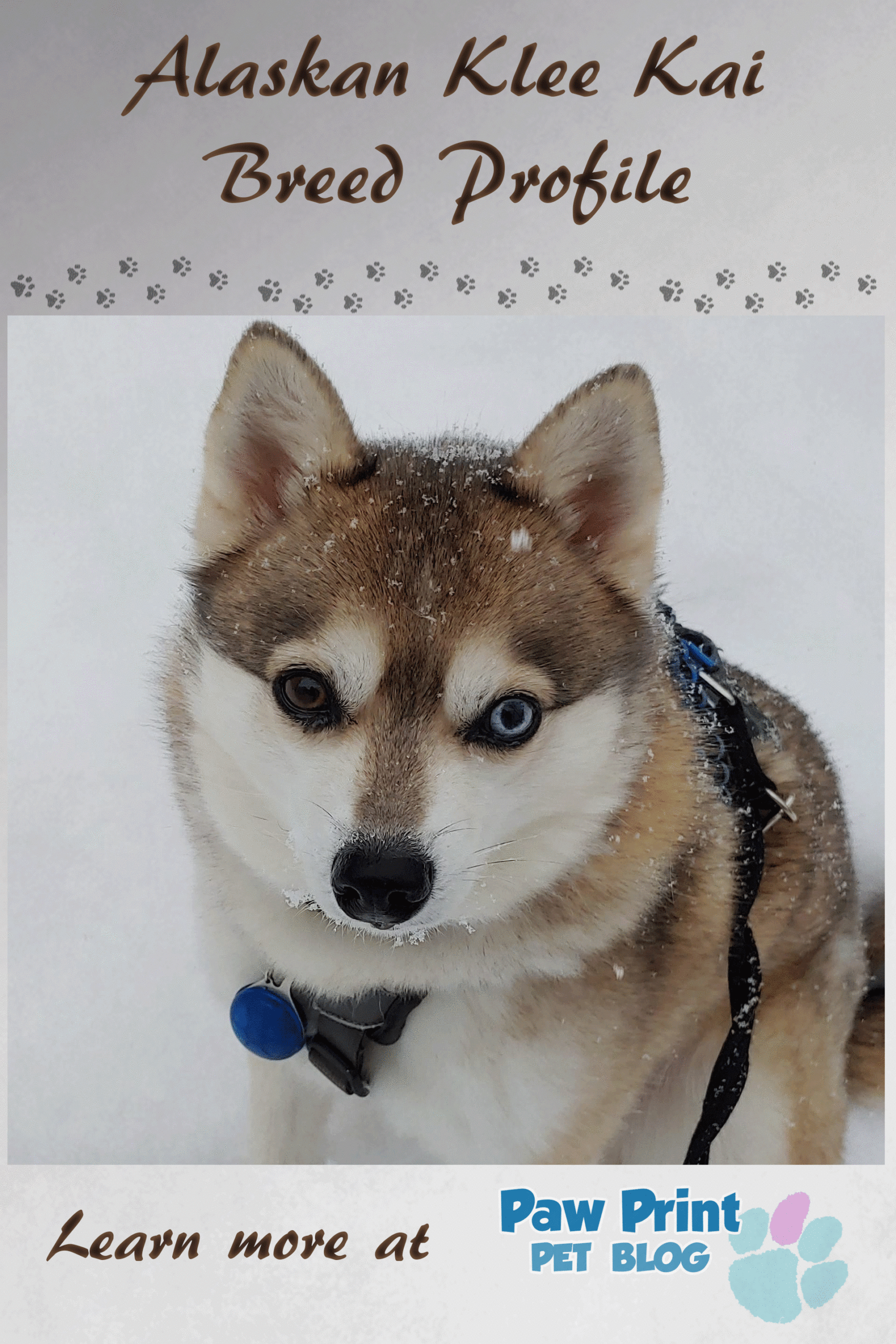

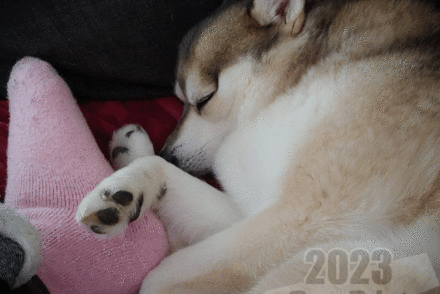
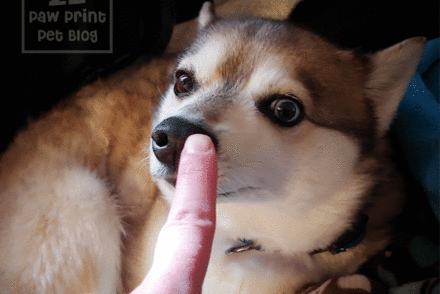
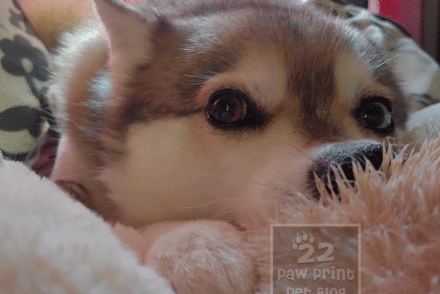

No Comments